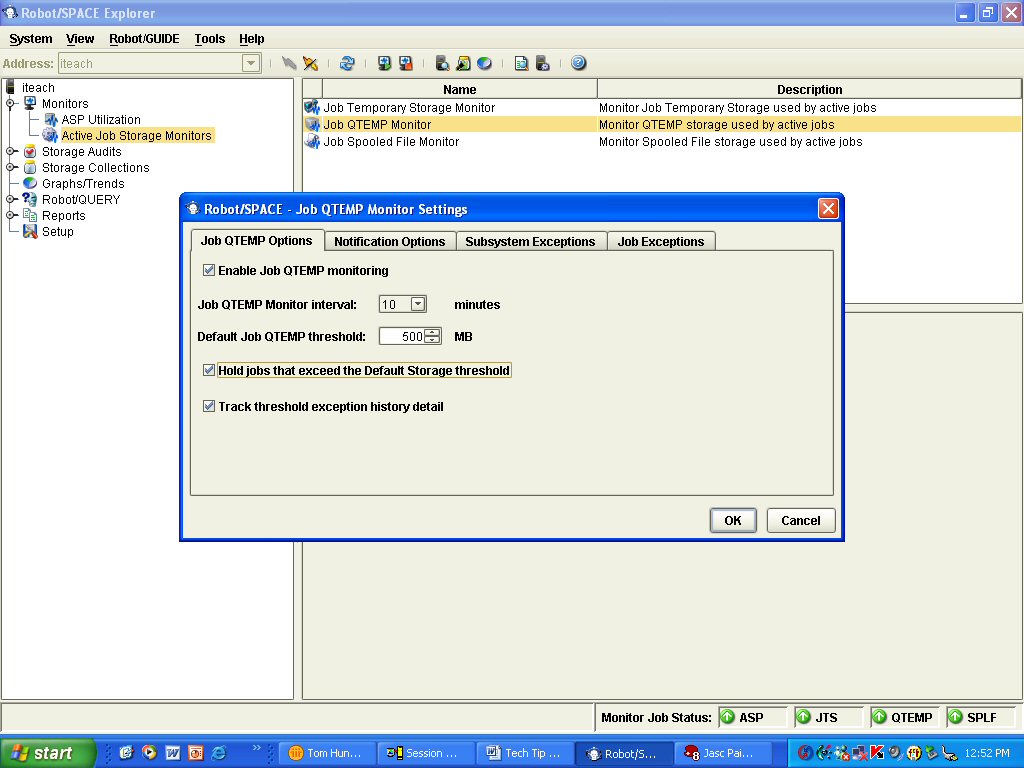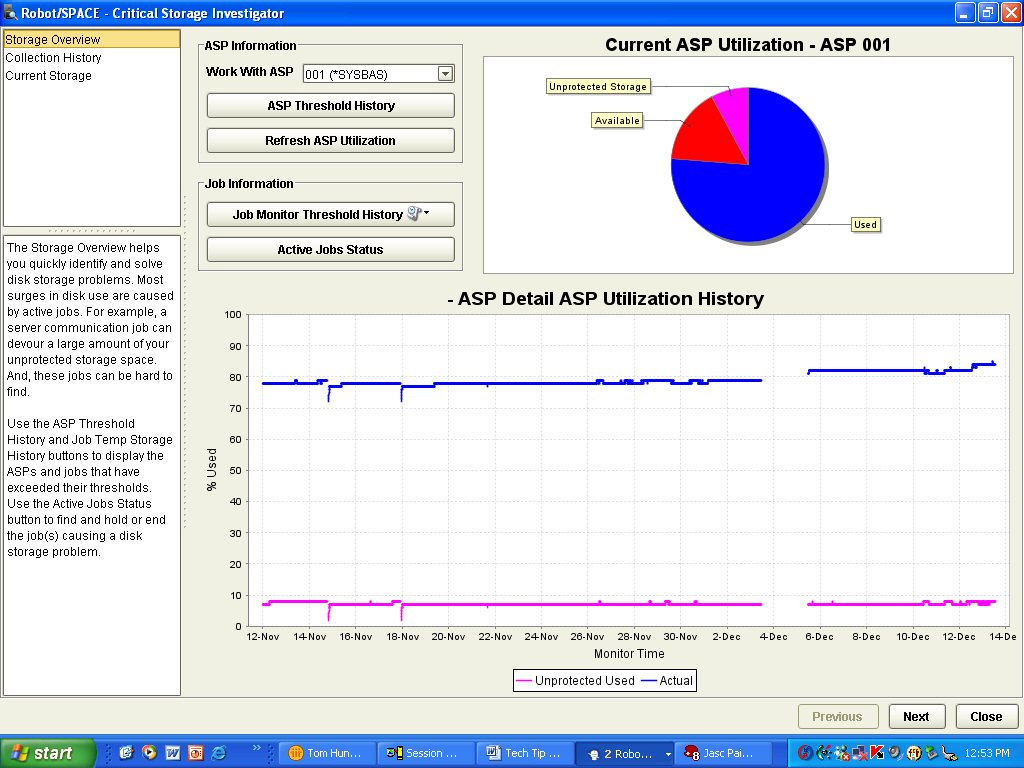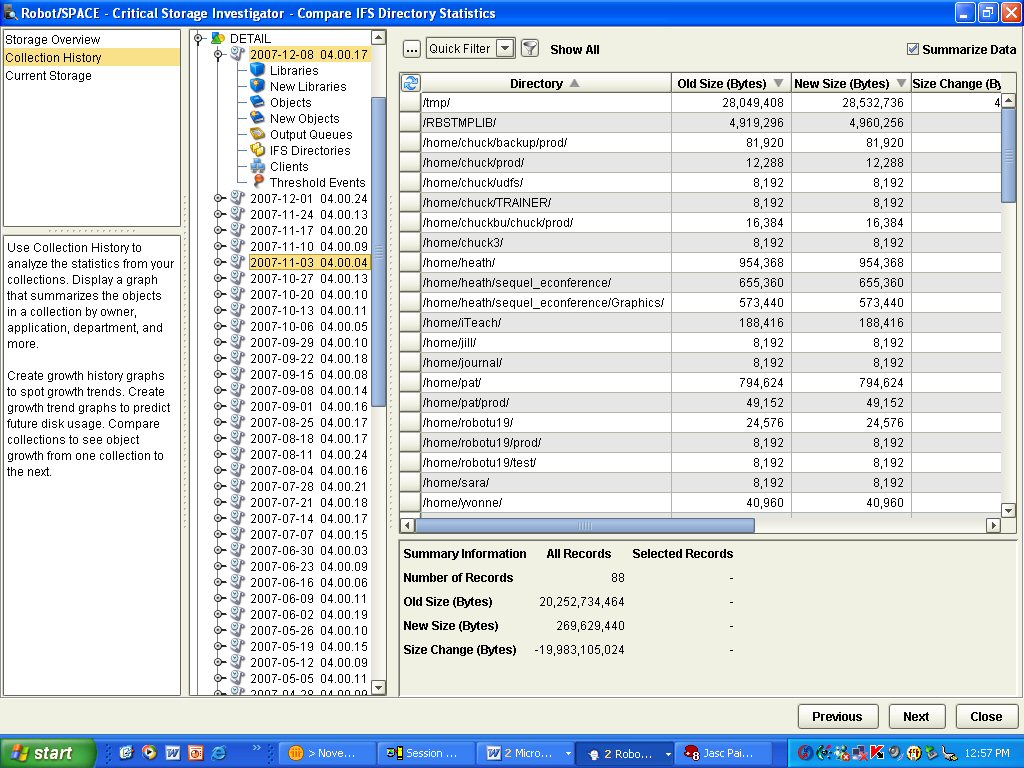There is no easy way to monitor the growth of QTEMP or temporary storage consumption.
"Hey, John, something is chewing up the disk space again on the System i. What library is it that's growing?" John replies, "I don't think it's a library. I ran the PRTDSKINFO command again, and it just finished after eight hours. No libraries are growing! Maybe we'll need to IPL and stop whatever is gobbling up disk space." The manager replies, "Not that again! We can't in the middle of month-end. There has to be a better way."
What should John and his manager do? Maybe they can see which job is using a good portion of the resources via WRKACTJOB. But what if they cancel the wrong job? What if they IPL during end-of-month processing? John and his manager are fighting in the dark.
Have you ever felt like John and his manager? There is no need for this. Robot/SPACE is here to manage this situation for you and, within seconds, help you pinpoint the job that is causing the problem. It has the Critical Storage Investigator (CSI), which progresses you from the obvious problem of a temporary storage condition to the less-obvious problem of growth in a library or IFS directory.
Monitoring temporary storage is easy with Robot/SPACE. It can monitor QTEMP libraries, job temporary storage, and spooled file storage. With any of these options, Robot/SPACE can notify you via email, i5/OS message, or cell phone whenever a threshold is exceeded. In five-minute increments that you designate, Robot/SPACE will sample all jobs on the system to see if they are consuming an unusual amount that surpasses your threshold. Figure 1 shows the new QTEMP monitor option.
After the notification, you simply launch the Critical Storage Investigator (CSI), which is the only tool you need to quickly find and correct a storage problem. The CSI graphically displays your current ASP utilization and your ASP utilization history in real time, as shown in Figure 2.
Frequently, a runaway job consuming a large amount of temporary storage drives up your unprotected storage used, and you see a noticeable spike on the graph. From the CSI, you can display the current size of all your jobs (and their predefined thresholds) and then hold or end the out-of-control job. Runaway jobs account for the majority of mysterious storage issues, but only Robot/SPACE monitors QTEMP, job temporary storage, and spooled file growth.
Robot/SPACE can even monitor your IFS growth and allow you to compare directory sizes from one collection to the next (Figure 3).
Isn't it time you upgrade your disk collection tools to match the problems you are faced with? The old tools just don't monitor temporary storage or manage the IFS the way Robot/SPACE does. Give Robot/SPACE a 30-day free trial. You have nothing to lose but headaches.
You can learn more about Robot/SPACE by clicking here. And check out Help/Systems' other offerings in the MC Press Buyer's Guide.















 Business users want new applications now. Market and regulatory pressures require faster application updates and delivery into production. Your IBM i developers may be approaching retirement, and you see no sure way to fill their positions with experienced developers. In addition, you may be caught between maintaining your existing applications and the uncertainty of moving to something new.
Business users want new applications now. Market and regulatory pressures require faster application updates and delivery into production. Your IBM i developers may be approaching retirement, and you see no sure way to fill their positions with experienced developers. In addition, you may be caught between maintaining your existing applications and the uncertainty of moving to something new. IT managers hoping to find new IBM i talent are discovering that the pool of experienced RPG programmers and operators or administrators with intimate knowledge of the operating system and the applications that run on it is small. This begs the question: How will you manage the platform that supports such a big part of your business? This guide offers strategies and software suggestions to help you plan IT staffing and resources and smooth the transition after your AS/400 talent retires. Read on to learn:
IT managers hoping to find new IBM i talent are discovering that the pool of experienced RPG programmers and operators or administrators with intimate knowledge of the operating system and the applications that run on it is small. This begs the question: How will you manage the platform that supports such a big part of your business? This guide offers strategies and software suggestions to help you plan IT staffing and resources and smooth the transition after your AS/400 talent retires. Read on to learn:
LATEST COMMENTS
MC Press Online